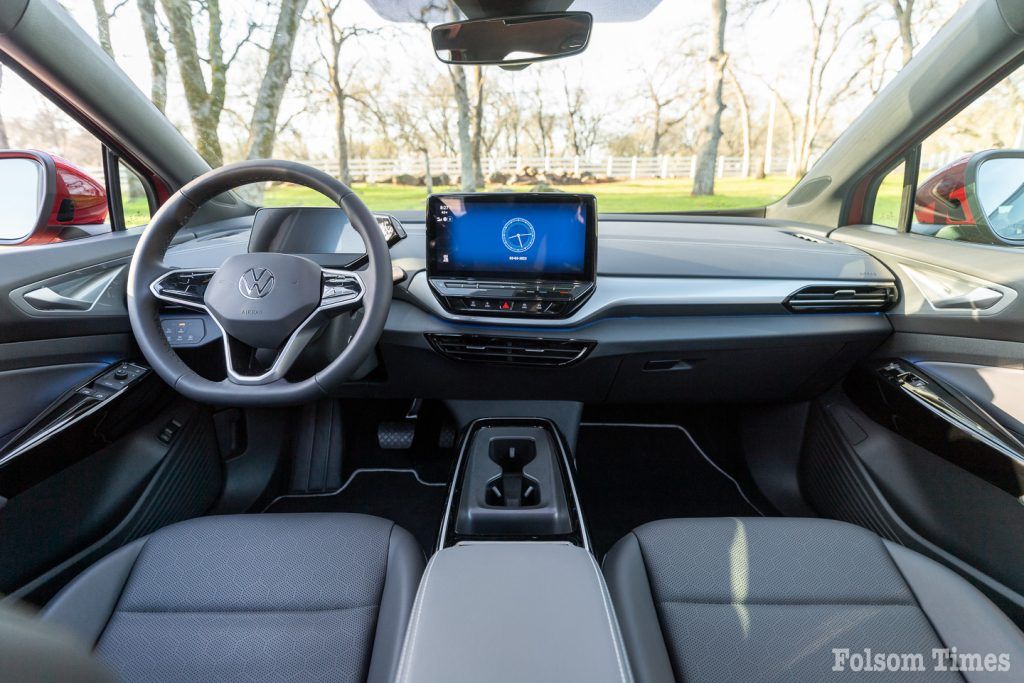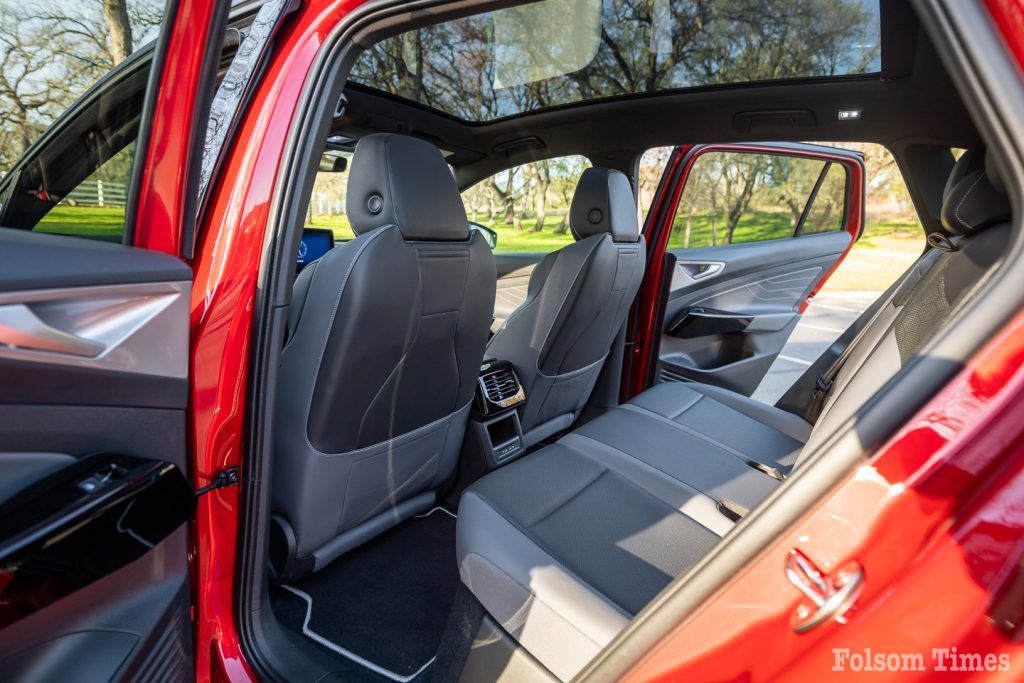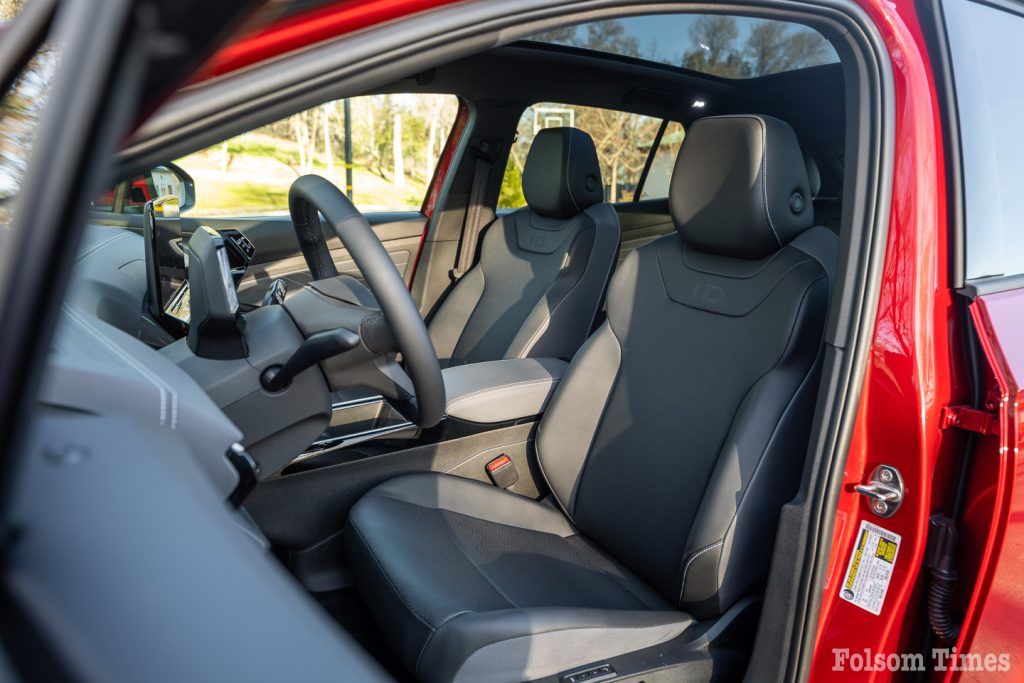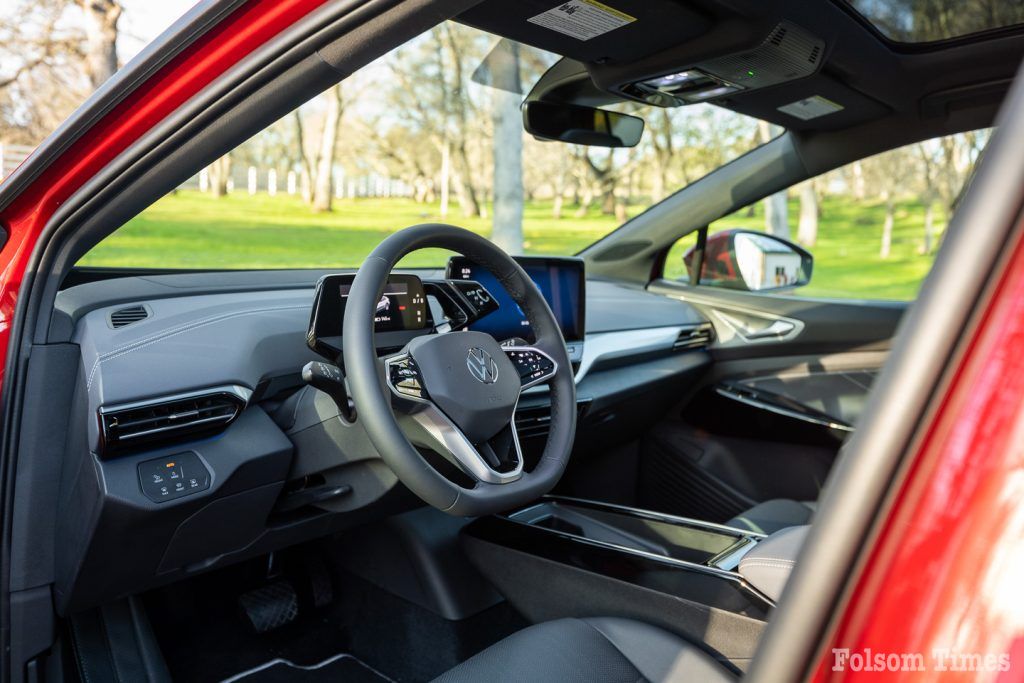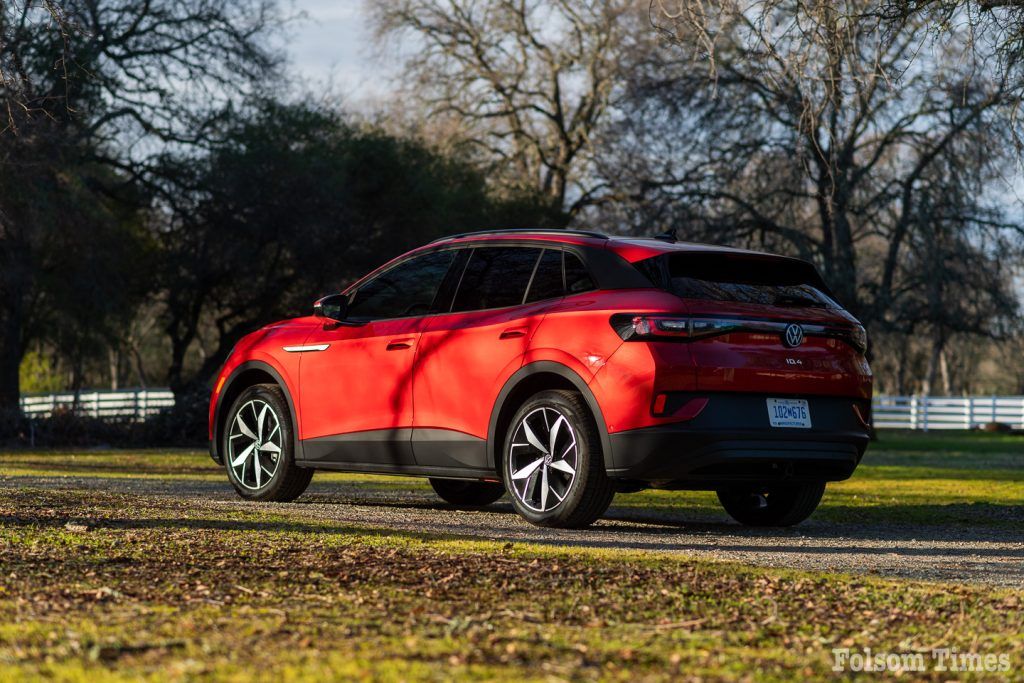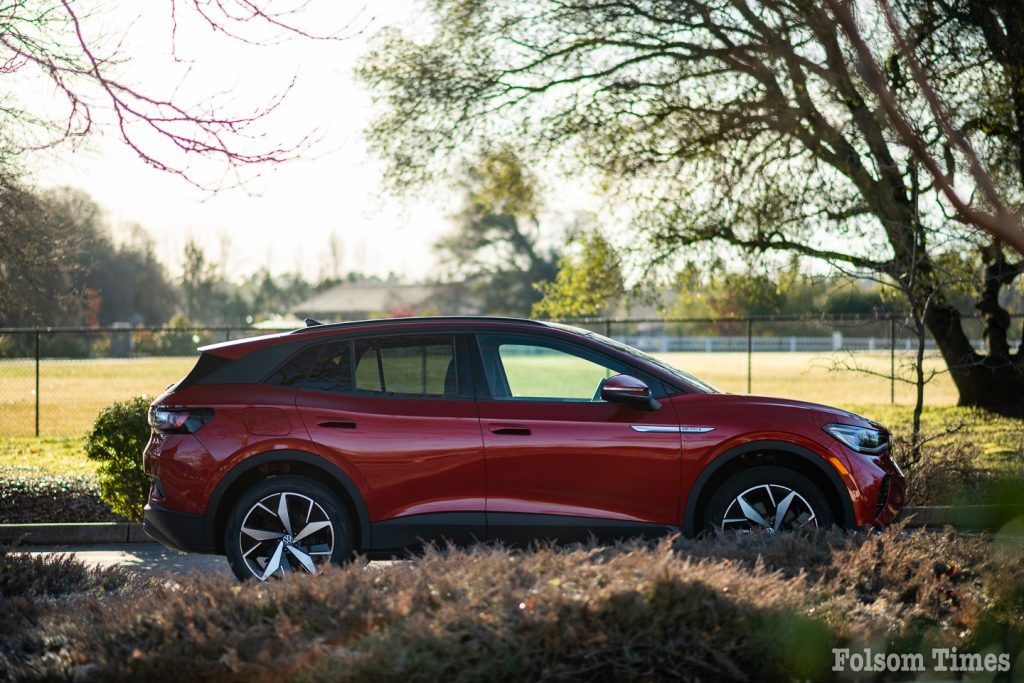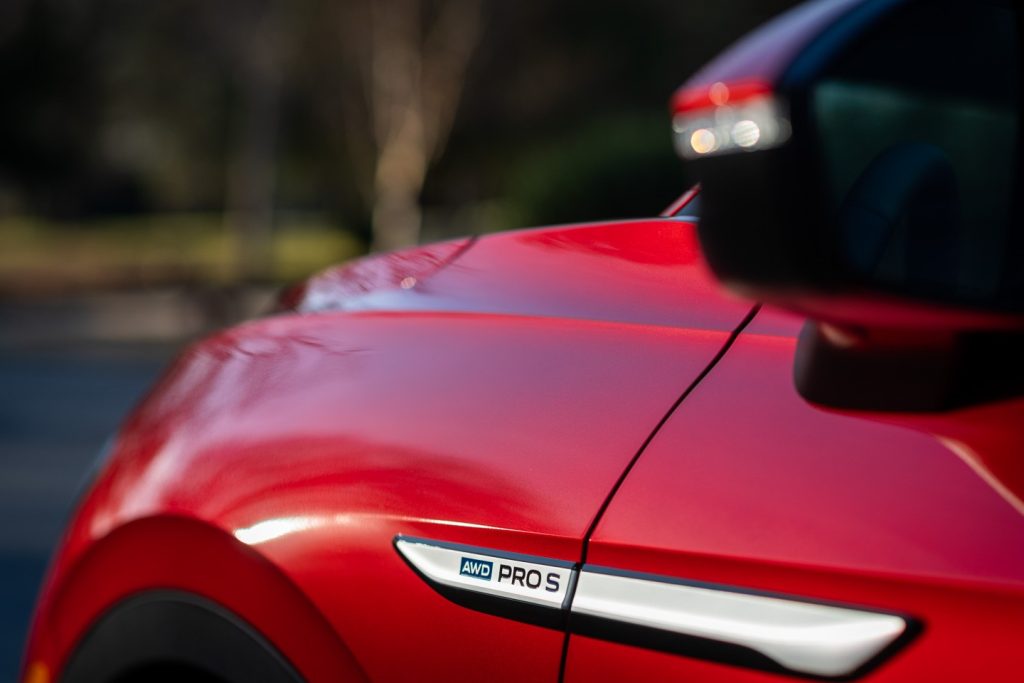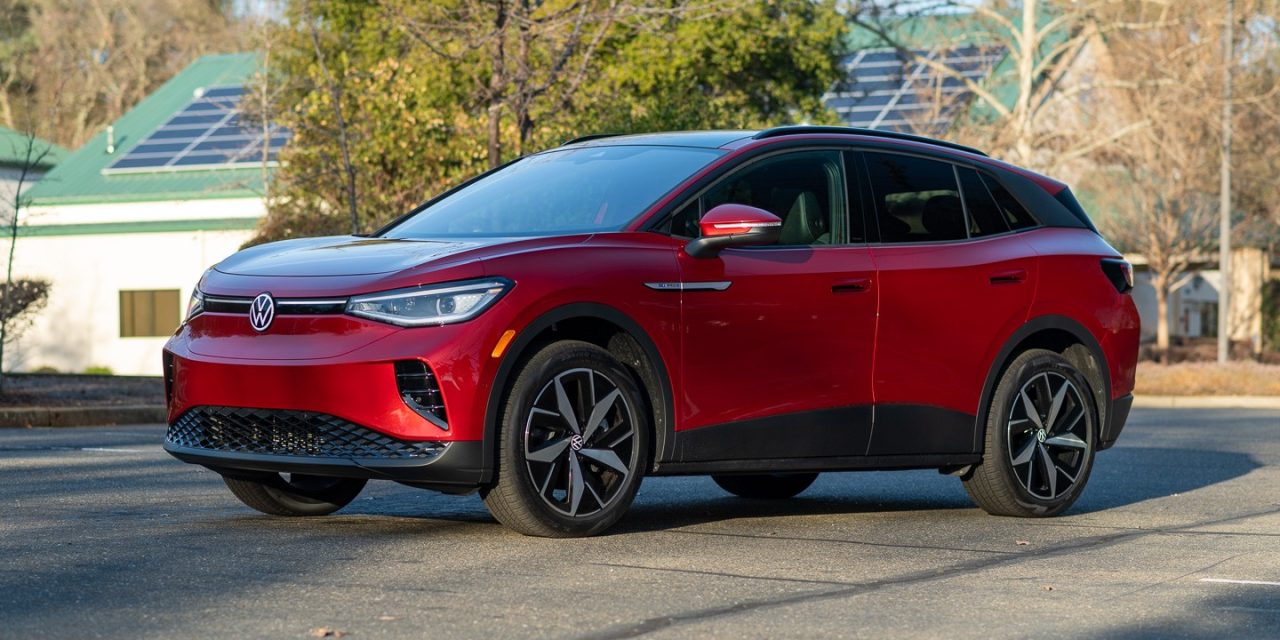Right now, the only reason to choose an ID.4 is because of its tax credit advantage. The rest is rather “meh.”
What is it? This is the third ID.4 I’ve tested in the last two years, represented here in the all-star of the ID.4 all-electric range: the AWD Pros S. Compared to standard ID.4s, this model is AWD and sees a sharp uptick in power and performance. It costs $52,985 as-tested, but unlike many key rivals, this one qualifies for a substantial $7,500 federal tax credit at the time of review.
The Pro S version seen here has 295 horsepower, a rapid increase to the base model’s paltry 201 horsepower. With this dual-motor model powering all four wheels, you can relax a bit more during inclement weather and enjoy increased grip when accelerating from a stop. 0-60 MPH takes 5.5 seconds, a decent number, but acceleration does wane considerably above 50 MPH, as is customary with many modest electric vehicles. Still, the ID.4 Pro S will take a Toyota bZ4X to Gapplebees every day of the week as a bZ4X-owner is left wondering about their life mistakes.
The interior is spacious enough for any person or small family, too, and it makes for a comfortable and respectively quiet ride when cruising on the freeway. Inside are many of the latest technology features that consumers want, and unlike prior tested ID.4s, this one suffered no lockups nor glitches in the infotainment system. I do like that the ID.4 gives the driver the option to choose between zero regenerative braking and nearly full one-pedal-driving due to aggressive energy recovery when braking. This means that simply lifting off the accelerator pedal incurs noticeable braking force, so the equivalent of coasting means slight pedal application still. It’s a change to traditional driving, but at least you are given a choice.
There’s also a hefty $7,500 tax credit available to potential customers, which can help make this a relatively affordable EV since it’s built in the United States and still qualifies for that rebate, unlike some of its foreign-made competitors.
The battery pack measures 82 kWh, which is on par for the segment, and I averaged 3 miles per kWh after a week of mixed driving, which should give a theoretical range of 246 miles. This number should be enough to ease most worries of range anxiety for simple commuting. However, 3 miles per kWh of stored energy might sound okay at first, but it is important to note I never drove over 70 MPH, even refusing to use the heater and any climate control besides seat warmers and the heated steering wheel during winter. As a result, actual real-world use by most drivers will see an average of 2.5 or even less, though I’ll give it the benefit of the doubt because it was a rather cold week in Northern California during this test, with sub-40-degree mornings (cold ambient temperatures have a negative effect on battery capacity/efficiency). My theoretical range was already below the EPA estimate on the window-sticker, so with more normal driving behavior and using the climate control, I’d expect most drivers to experience a range closer from 190 to 210 in the real-world during winter. I was at least proud to have conjured up an efficiency score starting with a 3 during winter. It’s less of a positive and more of just an average showing to keep up with similar competition.
Skip because…
Here comes the laundry list of items I don’t like that make this otherwise simple vehicle far from ideal in a perfect world, and in no real particular order.
I still dislike the gimmicky door handles, which offer no mechanical connection and feedback, feeling like a flimsy toy as you pull the interior lever. If they’re electronic, why not just use a button? Silly. Buttons are more futuristic anyways. The way they release the door can also be problematic on hills where it can almost get stuck half-shut. These strange appointments don’t end there, though, when it comes to the interior. Other oddities include some ergonomic nightmares like the lack of a volume knob and its subsequent replacement, the touch-sensitive finger-slider-thing, which is terrible to use. Most of the climate controls are placed inside the screen, but there are some physical controls for defrost still, yet they are not placed in the center of the dash, but instead to the left of the steering wheel where the headlight controls are.
The view out the front is marred by a dash and hood line (where the windshield meets the hood) that are too high, and confronted by intrusive A pillars that hinder peripherals. The front offers no additional storage despite having no combustion engine placed there. Another curiosity has me questioning why the center storage and cupholder areas are so bulbous and pointlessly large? Take a look at one of my interior photos that shows this art-inspired shape that offers zero additional lower storage and is just a complete waste. It’s ‘artsy’ for those that appreciate modern sculpture I guess, but only when viewed from the floor. This easily could be either cleared, for increased cabin space and openness, or turned into a usable and practical storage bin.
The infotainment is improved when it comes to operational smoothness over past ID.4s I tested, but some vehicle settings are too buried and cumbersome to access at times. A good example was trying to disable the auto-hold feature, which was hidden deep in the settings under ‘brakes,’ instead of a physical button like most vehicles have with this feature, but also, it’s curiously not accessible through the ‘assist’ button on the dash that accesses other safety systems.
I still don’t like the PRND rocker switch that was clearly stolen from BMW’s i3 (an interestingly bad source of inspiration for this specific feature), and the ID.4 itself is just a very boring vehicle to drive. It’s not slow, but it rarely comes across as quick, while being clearly slower and less enthusiastic than Hyundai’s excellent Ioniq 5 AWD. I found the ride quality to be choppy and unsettled on more intricate surfaces paired to steering that was nervous at higher speeds due to some darting behavior on the freeway, showing a lack of linear response as well as being too sensitive. There’s some decent grip and ability due to the AWD and dual motors distributing power to the right places, but there’s no joy to be found here, only coming across as wooden instead. The increased speed above a standard ID.4 is very welcome, but this is still a vehicle that does nothing to inspire during driving by any means, with no glaring standout features and doing nothing better than the competition when it comes to moving.
Also, when it comes to charging, the ID.4 Pro S is restricted to peak charging speeds of 150 KW on a level 3 DC fast charger. This instills the ability to charge pretty fast, but what can’t be ignored is the ability of some key rivals’ potential to charge at 350 KW now, further halving charge times on select DC charging stations. If you’re in a hurry and one of these ultra chargers are available, it can make a big difference, and VW will need to increase the charging ability to stay with rivals and make this a more viable future.
Taxes and price
The biggest advantage right now of the entire ID.4 range is the availability of a $7,500 US federal tax credit. Because it’s constructed in the United States, the ID.4 qualifies for the full amount, unlike Kia’s EV6, Hyundai’s Ioniq 5, and the Toyota bZ4X. Because of this unfair advantage, this becomes a decent deal at a net $45,000 cost and undercuts my favorite, the equivalent Ioniq 5, by some margin. So, if saving some bucks is your prime concern, that might be the sole reason to consider the ID.4. But, if you want save money, what’s wrong with a nice Toyota RAV4/Venza hybrid for $40,000? They each achieve 35 MPG still, with no charging concerns, are AWD, and you’ll save considerable up front.
The other company that must be mentioned is one that most probably think of when they picture an electric car: Tesla. Their Model Y crossover might be hideous in the flesh, but it’s a wonderfully packaged vehicle that performs great, too, also qualifying for the tax credit. Whatever your thoughts are towards the brand and their CEO, the delivered product is successful for a reason. Don’t also discount the Ford Mach-e, a stylish crossover that is also tax credit eligible. But here’s the thing, should a tax credit be the sole reason for choosing a vehicle? Ethically, it shouldn’t, and comes across as market manipulation, but sometimes the most important aspect to a buyer is the monthly payment.
A disappointing foray into EVs
I get that it sounds like I’m bagging and ragging really hard on this car, but it could be soooo much better than it is. The resulting product is one that languishes in creativity and provides no real confidence in a possible electric future, almost as if they just didn’t care. Two years ago, I wrote that the ID.4 provides a smooth and restrained transition to EVs because of its modest approach and lack of surprises, but that doesn’t stick today. Other rivals are coming out with exciting products that drive better, look better, and offer more range and faster charging. Simply put, the ID.4 is already old technology in a changing world. Other EVs are a stronger choice right now, or maybe it’s just best to wait for the next generation still. The one vehicle the ID.4 does best? Toyota’s bZ4X, another fruitless labor of disappointment that proved even more uncreative and dull. At the least the ID.4 can boast about that.
2023 Volkswagen ID.4 AWD Pro S
As-tested price: $52,985
Pros: Tax credit eligible
Cons: Average in every objective and subjective category. Dull.
Photos by Mitchell Weitzman with The Road Beat

